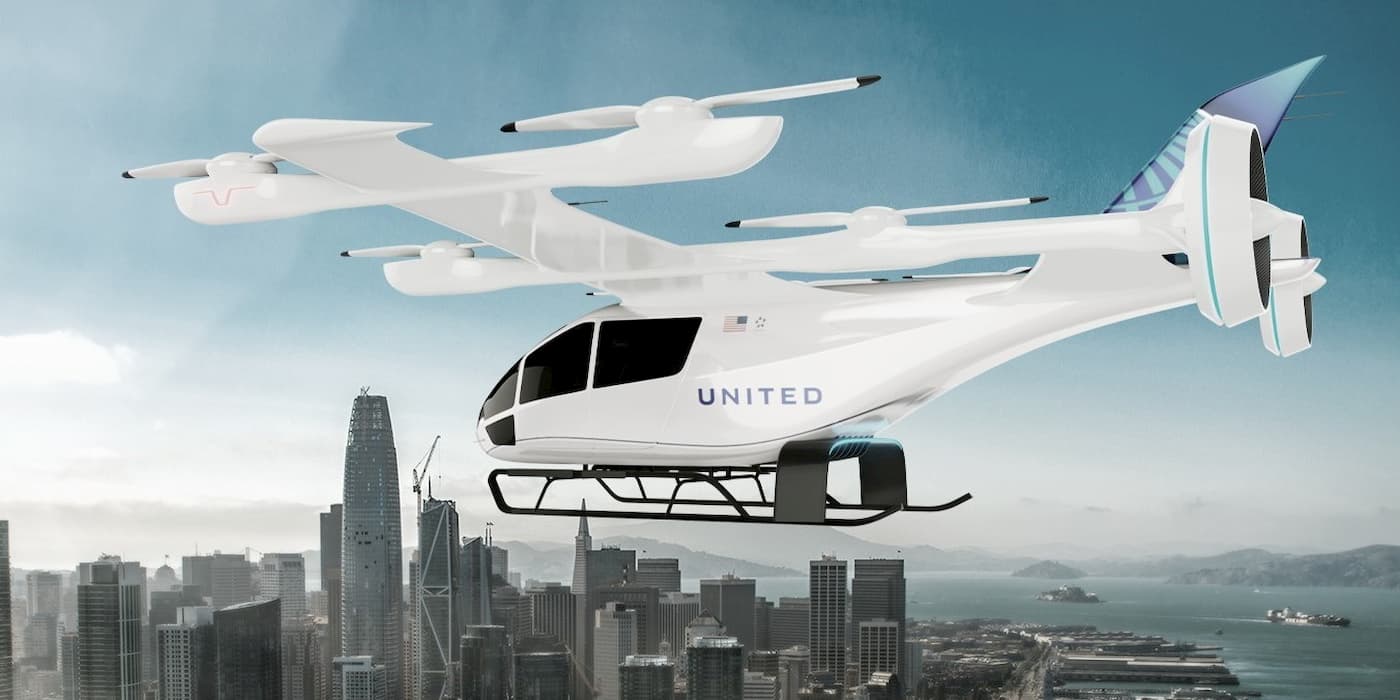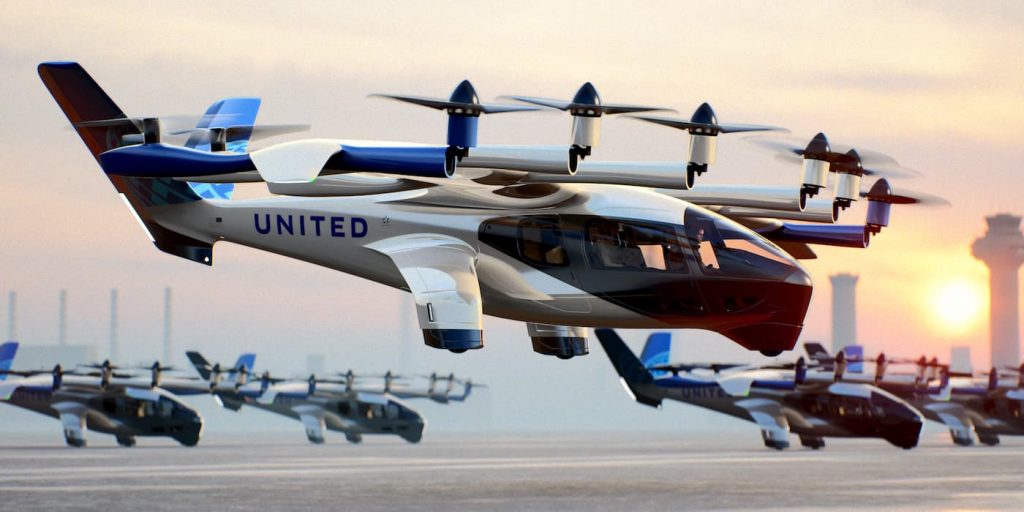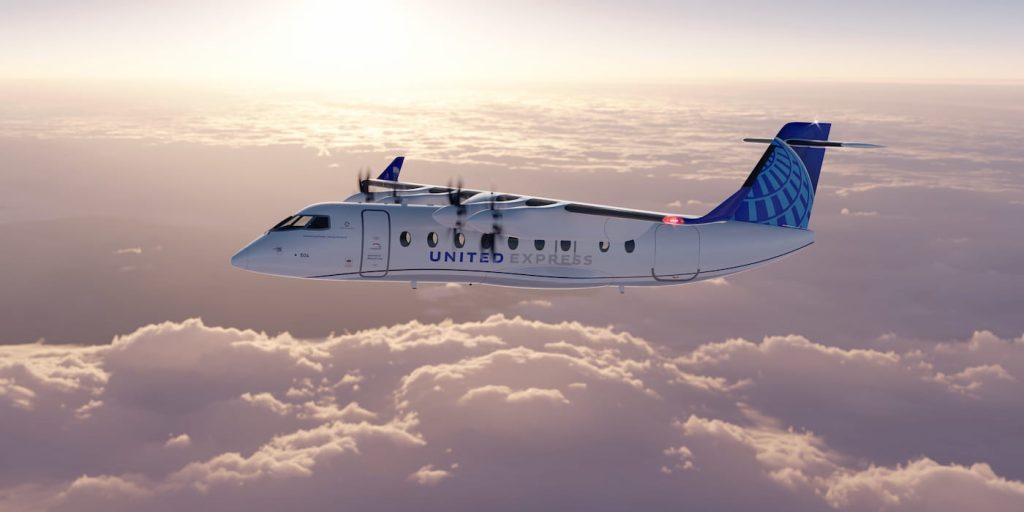
Soon you can hop on a fully electric vertical takeoff and landing (eVTOL) aircraft in the San Fransico Bay area for a quick, cost-effective way of getting around while limiting emissions. United Airlines and Eve Air Mobility revealed plans on Wednesday to launch the first electric commuter flights throughout the Bay Area.
Last year, United Airlines became the first major airliner to publicly invest in two eVTOL companies. Its first investment was in Archer Aviation in 2021.
Earlier this year, United and Archer revealed they would fly the first electric air taxi route in Chicago, using Archer’s Midnight Aircraft. Using six battery packs, the Midnight is designed to carry four passengers, luggage, and a pilot for up to 100 miles. Its first flight is this summer.
Last September, United revealed a new $15 million investment in Eve Air Mobility, a subsidiary of Embraer, with a conditional purchase agreement to buy up to 400 electric taxis (200 are optional) as early as 2026.
The partners took it a step further, announcing plans on Wednesday to launch the first electric commuter flights in San Francisco.

United to launch first electric commuter flights in SF
United and Eve Air Mobility plan to bring Urban Air Mobility (UAM) to San Francisco with the first electric commuter flights in the area.
The alliance will work with local and state officials, infrastructure, energy, and tech providers to ensure the proper equipment is in place for the eVTOLs.
Eve’s eVTOL is 100% electric and can carry up to four passengers plus one pilot for up to 60 miles range (100 km).
The company says its electric aircraft offers over 600% lower cost-per-seat than helicopters and can reduce emissions by up to 80% vs. traveling by car. Eve’s EVTOL is slated to enter service in 2026.
Rather than relying on combustion engines, eVTOLs offer a carbon-free alternative in urban markets. Also, you can skip the traffic during rush hour.
Reducing emissions from air travel
As one of the largest American airline companies, United Airlines has a massive responsibility to reduce its environmental impact.
United was the first US airliner to commit to reducing its GHG emissions by 50% by 2050, later upping its goal to 100%. The best part: United plans to do it without using common carbon offsetting tactics.
Top comment by SeanF
I would like to see some real reporting instead of just regurgitating a bunch of links of stuff we already knew. I notice they don't mention where this "air taxi" can pick up and drop off, how much a flight would cost, or if it's on-demand (ride share style) or scheduled flights. I'm sorry... scheduled airport-to-airport travel is not a quick, cost effective way to get around. It's just another helicopter that has to follow all the FAA regulations for a helicopter. And my guess is it's going to cost anywhere from $10-$20 per mile unless the operator is willing to eat costs to get adoption.
Instead, United has made a series of investments to drive down future emissions like the ones mentioned above. Scott Kirby, United’s CEO, explained several years ago:
These game-changing technologies will significantly reduce our emissions, and measurably reduce the speed of climate change – because buying carbon offsets alone is just not enough. Perhaps most importantly, we’re not just doing it to meet our own sustainability goal; we’re doing it to drive the positive change our entire industry requires so that every airline can eventually join us and do the same.
United has also invested in fully electric aircraft that can transport more passengers for longer distances.

The airliner invested in electric plane startup Heart Aerospace in 2021, agreeing to buy up to 200 aircraft. Heart is developing a 19-seat electric airplane (ES-19) capable of flying up to 250 miles, due out by the end of the decade. It’s also developing a larger, 30-seat electric plane, the ES-30.
United believes its investment will enable the company to fast-track the ES-19’s development to as early as 2026.
FTC: We use income earning auto affiliate links. More.




Comments